Do you have a question about the Carrier Infinity Control SYSTXCCUID01 and is the answer not in the manual?
Explains DANGER, WARNING, and CAUTION signal words used with the safety-alert symbol.
Emphasizes following manufacturer instructions and local electrical codes for safe installation.
Describes the Infinity System's communicating components and benefits of variable-speed technology.
Explains how the Infinity Control acts as a central controller for all system features.
This document covers Infinity Control installation, setup, and commissioning.
Outlines steps: install control, indoor/outdoor units, wire system, and commission.
Guidelines for optimal placement and wiring of the Infinity Control unit.
Details on recess or surface mounting the Infinity Control, including decorative backplates.
Routing wires through the mounting plastic and connecting them to the terminal backplate.
Reference to diagrams for connecting the Infinity System components and accessories.
Instructions for connecting bypass or fan-powered humidifiers to the system.
Describes the initial startup process for the Infinity Control, including equipment identification.
Procedure to select the outdoor unit type (AC/HP) and Btu size during initial setup.
Procedure to select the electric heater size if it's not self-identifying.
Options for selecting air filter type (Media, EAC) and setting the cleaning interval.
Steps to indicate if a humidifier or UV lights are installed and set their maintenance intervals.
Displays a summary of all automatically found or manually selected system equipment.
Confirms and saves all selected equipment and accessory settings to complete the initial setup.
Guides on setting the current day, time, and desired humidity levels for the system.
Instructions on how to temporarily override the heating schedule and set a desired temperature.
Instructions on how to temporarily override the cooling schedule and set a desired temperature.
Provides a quick guide to setting a uniform schedule for all days of the week.
Procedure to enter the Install/Service menus by holding the ADVANCED button.
Overview of options: Equipment Summary, Install, Setup, Checkout, Service, Software Version.
Displays recognized indoor/outdoor unit types, filter type, and installed accessories.
Initiates the start-up process to learn all system equipment.
Configuration for Auto Mode, Deadband, Offsets, Cycles Per Hour, Programming, and Display.
Configuration for Airflow, Heat Rise, Staging, Off Delay, and Lockout Temperature.
Configuration for HP/AC Airflow, Dehumidify Airflow, and Heater Size.
Configuration for Cooling Lockout, Entered Size, Defrost Interval, and Electric Heat Lockout.
Configuration for Filter Type, Humidifier, Ventilator, and UV Lights.
Sets the interval for the normal System Maintenance notification for the homeowner.
Allows exercising of the furnace for low and high heat runtimes and ignition sequence.
Allows exercising of electric heat stages for fan coil units.
Allows exercising of heat pump heating with selectable low/high runtimes and defrost cycle.
Allows exercising of heat pump/AC cooling with selectable low/high runtimes.
Allows exercising the humidifier to be turned On or Off.
Allows exercising the ventilator through all of its operating speeds.
Displays current operating parameters like heat stage, airflow CFM, inducer/blower RPM, static pressure.
Displays current operating parameters for fan coil electric heat status and airflow.
Displays status of heat pump/AC heating/cooling, defrost, airflow, coil temp, and static pressure.
Shows the last 10 system faults, including time, date, and equipment identifier.
Provides histories for indoor/outdoor units: fault counters, cycle counters, and lifetime run times.
Allows entering the current date for time/date stamping of system faults.
Displays model and serial numbers of communicating equipment in the system.
Enables entering contact information for homeowner service reminders.
Explains how to use the FAN button to cycle through AUTO, LOW, MED, and HIGH fan speeds.
Details the compressor protection timer and how to temporarily defeat it.
Instructions on how to activate Emergency Heat by pressing and holding the HEAT button.
Describes how to lock and unlock the keypad by pressing specific button combinations.
Notes that the Heat and Cool LEDs will pulsate during actual equipment operation.
Explains the timer preventing short cycling, adjustable from 4-6 cycles per hour.
Describes the timer preventing higher stages from activating until the previous stage runs for 10 minutes.
Notes that stages will remain on for a minimum of three minutes during normal operation.
Explains the enforced minimum difference between heating and cooling set points.
Details the auto mode changeover time setting, adjustable from 5 to 120 minutes.
Describes how Smart Recovery adjusts room temperature before scheduled recovery times.
Troubleshooting steps for power issues, including checking wiring and fuses.
Steps to resolve 'Indoor Unit Not Found' error, checking wiring and connections.
Troubleshooting steps for 'Outdoor Unit Not Found' error with two-speed units.
Instructions on how to restart the system's initial setup process.
Lists errors causing a Critical Malfunction screen and their potential causes.
Lists errors causing a System Malfunction screen and their potential causes.
Explains DANGER, WARNING, and CAUTION signal words used with the safety-alert symbol.
Emphasizes following manufacturer instructions and local electrical codes for safe installation.
Describes the Infinity System's communicating components and benefits of variable-speed technology.
Explains how the Infinity Control acts as a central controller for all system features.
This document covers Infinity Control installation, setup, and commissioning.
Outlines steps: install control, indoor/outdoor units, wire system, and commission.
Guidelines for optimal placement and wiring of the Infinity Control unit.
Details on recess or surface mounting the Infinity Control, including decorative backplates.
Routing wires through the mounting plastic and connecting them to the terminal backplate.
Reference to diagrams for connecting the Infinity System components and accessories.
Instructions for connecting bypass or fan-powered humidifiers to the system.
Describes the initial startup process for the Infinity Control, including equipment identification.
Procedure to select the outdoor unit type (AC/HP) and Btu size during initial setup.
Procedure to select the electric heater size if it's not self-identifying.
Options for selecting air filter type (Media, EAC) and setting the cleaning interval.
Steps to indicate if a humidifier or UV lights are installed and set their maintenance intervals.
Displays a summary of all automatically found or manually selected system equipment.
Confirms and saves all selected equipment and accessory settings to complete the initial setup.
Guides on setting the current day, time, and desired humidity levels for the system.
Instructions on how to temporarily override the heating schedule and set a desired temperature.
Instructions on how to temporarily override the cooling schedule and set a desired temperature.
Provides a quick guide to setting a uniform schedule for all days of the week.
Procedure to enter the Install/Service menus by holding the ADVANCED button.
Overview of options: Equipment Summary, Install, Setup, Checkout, Service, Software Version.
Displays recognized indoor/outdoor unit types, filter type, and installed accessories.
Initiates the start-up process to learn all system equipment.
Configuration for Auto Mode, Deadband, Offsets, Cycles Per Hour, Programming, and Display.
Configuration for Airflow, Heat Rise, Staging, Off Delay, and Lockout Temperature.
Configuration for HP/AC Airflow, Dehumidify Airflow, and Heater Size.
Configuration for Cooling Lockout, Entered Size, Defrost Interval, and Electric Heat Lockout.
Configuration for Filter Type, Humidifier, Ventilator, and UV Lights.
Sets the interval for the normal System Maintenance notification for the homeowner.
Allows exercising of the furnace for low and high heat runtimes and ignition sequence.
Allows exercising of electric heat stages for fan coil units.
Allows exercising of heat pump heating with selectable low/high runtimes and defrost cycle.
Allows exercising of heat pump/AC cooling with selectable low/high runtimes.
Allows exercising the humidifier to be turned On or Off.
Allows exercising the ventilator through all of its operating speeds.
Displays current operating parameters like heat stage, airflow CFM, inducer/blower RPM, static pressure.
Displays current operating parameters for fan coil electric heat status and airflow.
Displays status of heat pump/AC heating/cooling, defrost, airflow, coil temp, and static pressure.
Shows the last 10 system faults, including time, date, and equipment identifier.
Provides histories for indoor/outdoor units: fault counters, cycle counters, and lifetime run times.
Allows entering the current date for time/date stamping of system faults.
Displays model and serial numbers of communicating equipment in the system.
Enables entering contact information for homeowner service reminders.
Explains how to use the FAN button to cycle through AUTO, LOW, MED, and HIGH fan speeds.
Details the compressor protection timer and how to temporarily defeat it.
Instructions on how to activate Emergency Heat by pressing and holding the HEAT button.
Describes how to lock and unlock the keypad by pressing specific button combinations.
Notes that the Heat and Cool LEDs will pulsate during actual equipment operation.
Explains the timer preventing short cycling, adjustable from 4-6 cycles per hour.
Describes the timer preventing higher stages from activating until the previous stage runs for 10 minutes.
Notes that stages will remain on for a minimum of three minutes during normal operation.
Explains the enforced minimum difference between heating and cooling set points.
Details the auto mode changeover time setting, adjustable from 5 to 120 minutes.
Describes how Smart Recovery adjusts room temperature before scheduled recovery times.
Troubleshooting steps for power issues, including checking wiring and fuses.
Steps to resolve 'Indoor Unit Not Found' error, checking wiring and connections.
Troubleshooting steps for 'Outdoor Unit Not Found' error with two-speed units.
Instructions on how to restart the system's initial setup process.
Lists errors causing a Critical Malfunction screen and their potential causes.
Lists errors causing a System Malfunction screen and their potential causes.
| Display | Color Touchscreen |
|---|---|
| Compatibility | Carrier Infinity System |
| Humidity Control | Yes |
| Zoning | Supports up to 8 zones |
| Connectivity | Wired |
| Power Source | 24VAC |
| Features | Remote Access |
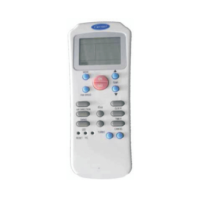
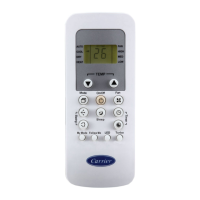

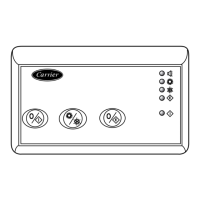
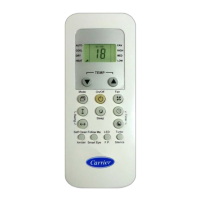
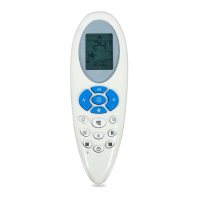
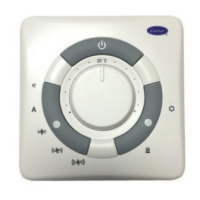
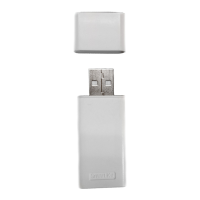
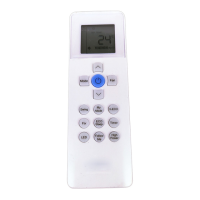


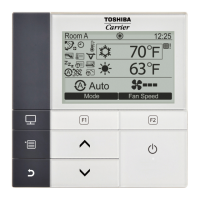
